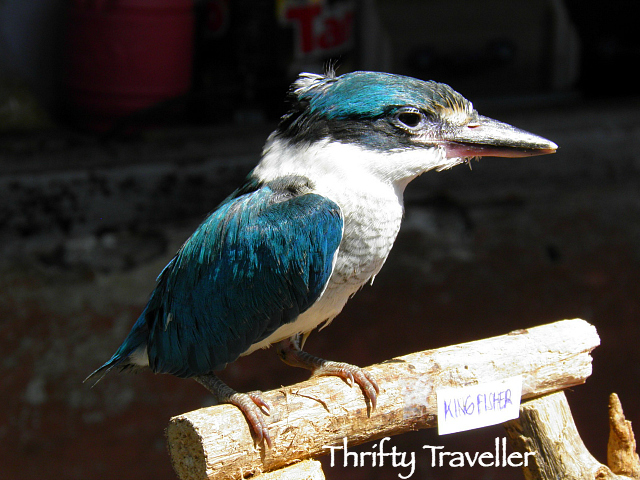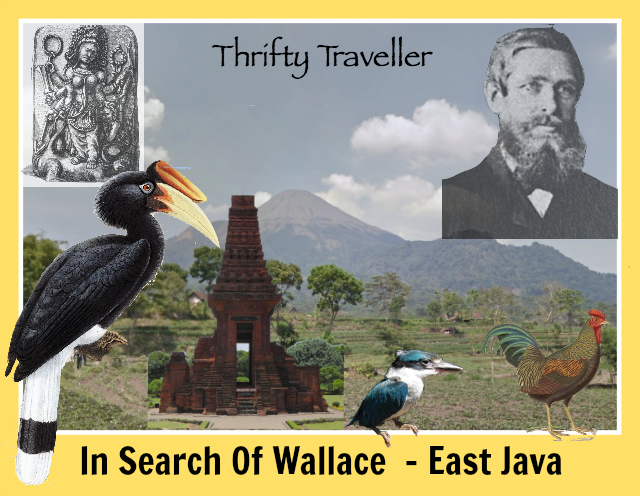
Continuing with my In Search Of Wallace series, last week I travelled to Surabaya in Indonesia to try to retrace Alfred Russel Wallace’s footsteps in East Java which he visited in the summer of 1861.
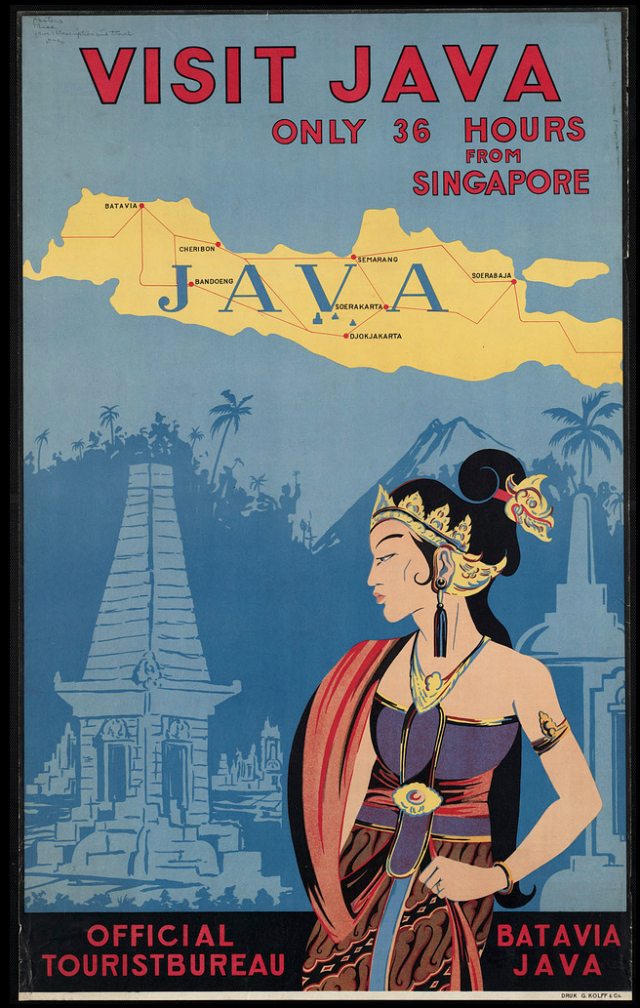
In italics below are extracts from The Malay Archipelago in which he describes the area.
“The Dutch mail steamer brought me from Ternate to Sourabaya, the chief town and port in the eastern part of Java, and after a fortnight spent in packing up and sending off my last collections, I started on a short journey into the interior. Travelling in Java is very luxurious but very expensive, the only way being to hire or borrow a carriage, and then pay half a crown a mile for post-horses…”
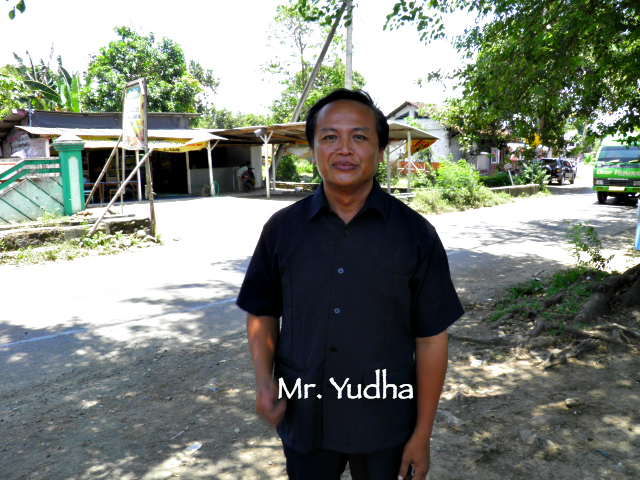
“As this kind of travelling world not suit my means, I determined on making only a short journey to the district at the foot of Mount Arjuna, where I was told there were extensive forests, and where I hoped to be able to make some good collections.”

“I stopped at Modjokerto, a small town about forty miles south of Sourabaya, and the nearest point on the high road to the district I wished to visit. I had a letter of introduction to Mr. Ball, an Englishman, long resident in Java and married to a Dutch lady; and he kindly invited me to stay with him until I could fix on a place to suit me. A Dutch Assistant Resident as well as a Regent or native Javanese prince lived here. The town was neat, and had a nice open grassy space like a village green, on which stood a magnificent fig-tree (allied to the Banyan of India, but more lofty), under whose shade a kind of market is continually held, and where the inhabitants meet together to lounge and chat.”
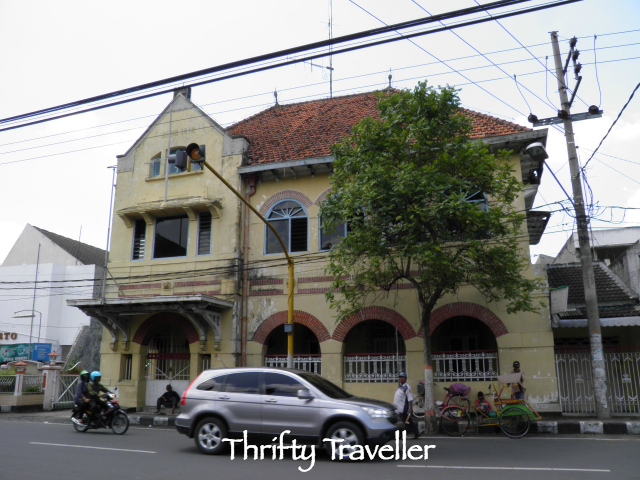
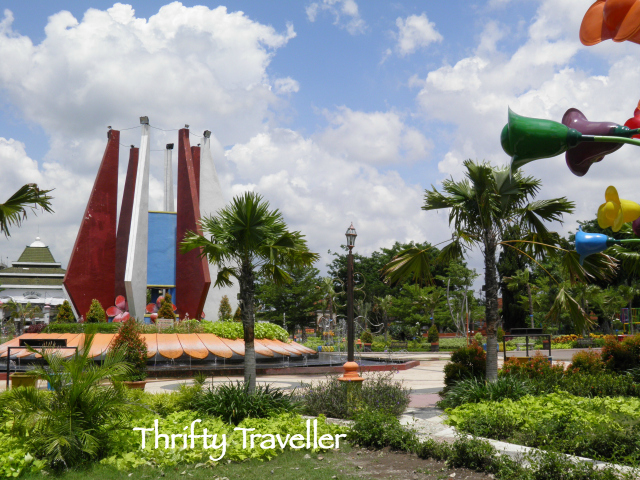
“The day after my arrival, Mr. Ball drove me over to the village of Modjo-agong. On our way we stayed to look at a fragment of the ruins of the ancient city of Modjo-pahit, consisting of two lofty brick masses, apparently the sides of a gateway.”
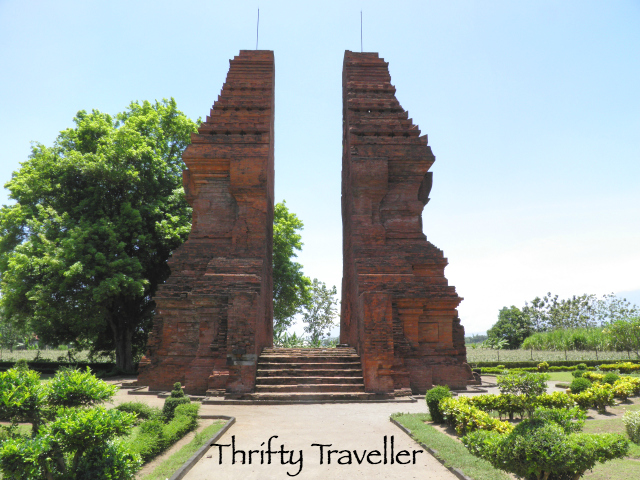
“The extreme perfection and beauty of the brickwork astonished me. The bricks are exceedingly fine and hard, with sharp angles and true surfaces. They are laid with great exactness, without visible mortar or cement, yet somehow fastened together so that the joints are hardly perceptible, and sometimes the two surfaces coalesce in a most incomprehensible manner. Such admirable brickwork I have never seen before or since. There was no sculpture here, but an abundance of bold projections and finely-worked mouldings.”
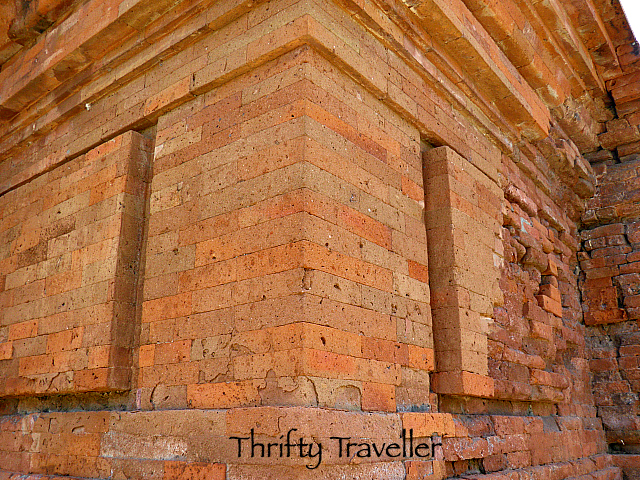
“Traces of buildings exist for many miles in every direction, and almost every road and pathway shows a foundation of brickwork beneath it–the paved roads of the old city.”
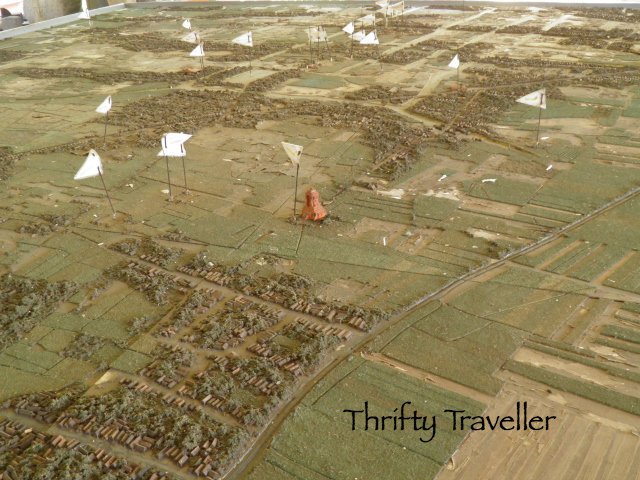
“It is much to be regretted that the Dutch Government does not take vigorous steps for the preservation of these ruins from the destroying agency of tropical vegetation; and for the collection of the fine sculptures which are everywhere scattered over the land.”
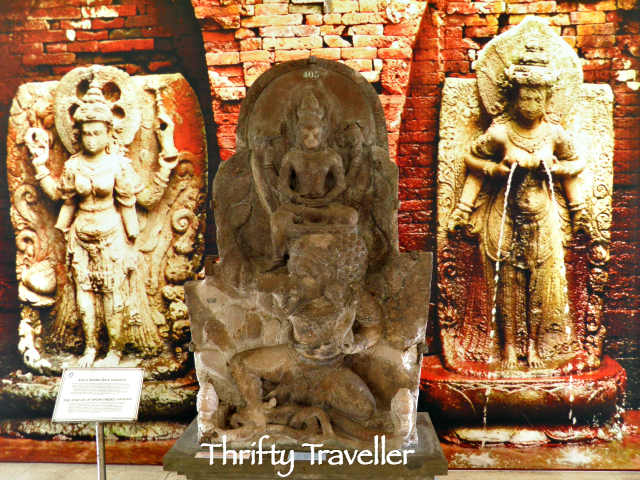
“In the house of the Waidono or district chief at Modjo- agong, I saw a beautiful figure carved in high relief out of a block of lava, and which had been found buried in the ground near the village. On my expressing a wish to obtain some such specimen, Mr. B. asked the chief for it, and much to my surprise he immediately gave it me. It represented the Hindu goddess Durga, called in Java, Lora Jonggrang (the exalted virgin).”
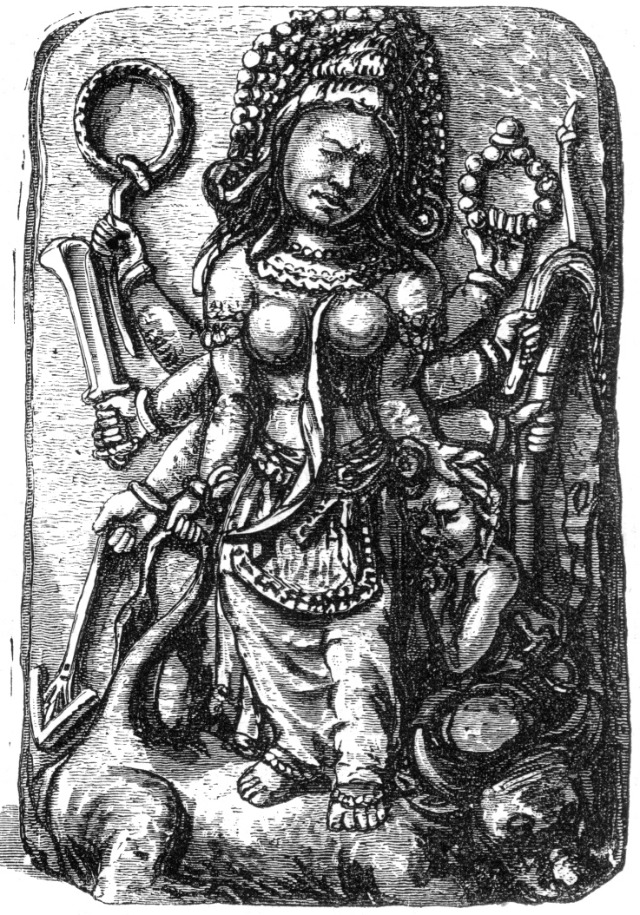
“The road to Wonosalem led through a magnificent forest in the depths of which we passed a fine ruin of what appeared to have been a royal tomb or mausoleum. It is formed entirely of stone, and elaborately carved. Near the base is a course of boldly projecting blocks, sculptured in high relief, with a series of scenes which are probably incidents in the life of the defunct. These are all beautifully executed, some of the figures of animals in particular, being easily recognisable and very accurate. The general design, as far as the ruined state of the upper part will permit of its being seen, is very good, effect being given by an immense number and variety of projecting or retreating courses of squared stones in place of mouldings. The size of this structure is about thirty feet square by twenty high, and as the traveller comes suddenly upon it on a small elevation by the roadside, overshadowed by gigantic trees, overrun with plants and creepers, and closely backed by the gloomy forest, he is struck by the solemnity and picturesque beauty of the scene, and is led to ponder on the strange law of progress, which looks so like retrogression, and which in so many distant parts of the world has exterminated or driven out a highly artistic and constructive race, to make room for one which, as far as we can judge, is very far its inferior.”
Here are some other historic sites which I visited in this area which Wallace may also have seen:
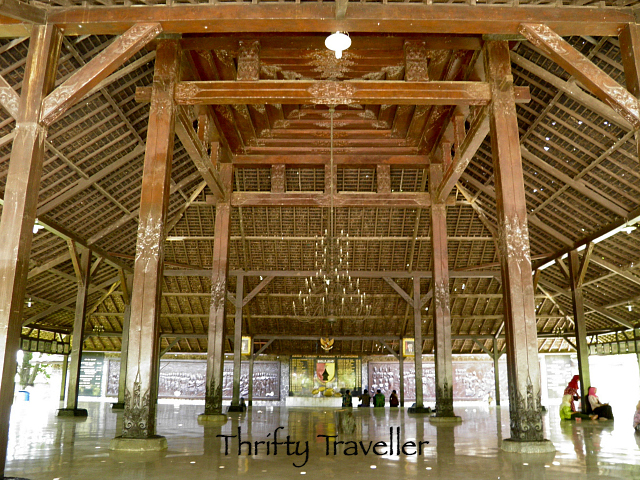
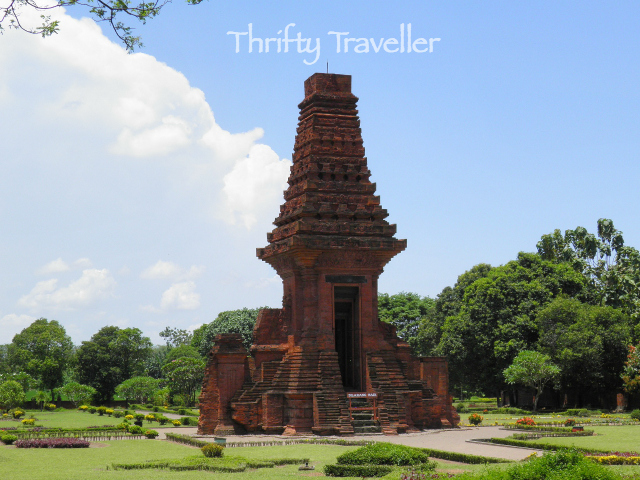
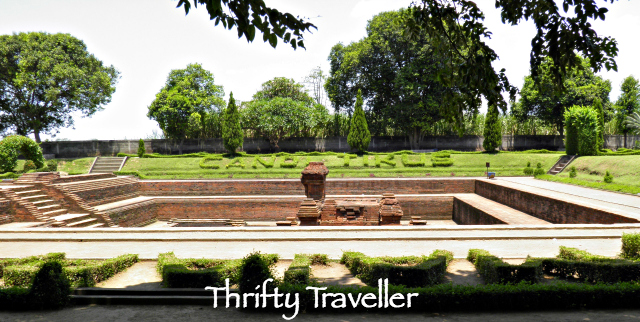
“Wonosalem is situated about a thousand feet above the sea, but unfortunately it is at a distance from the forest, and is surrounded by coffee plantations, thickets of bamboo, and coarse grasses. It was too far to walk back daily to the forest, and in other directions I could find no collecting ground for insects. The place was, however, famous for peacocks, and my boy soon shot several of these magnificent birds, whose flesh we found to be tender, white, and delicate, and similar to that of a turkey.”
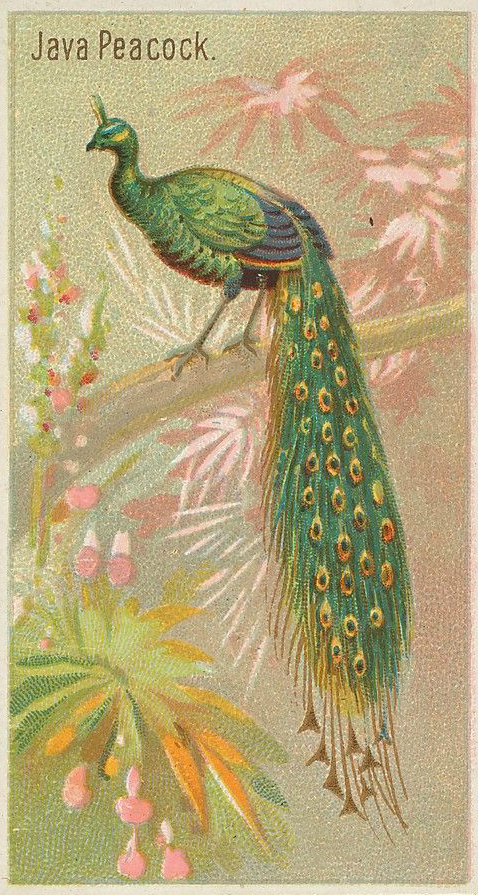
“The Java peacock is a different species from that of India, the neck being covered with scale-like green feathers, and the crest of a different form; but the eyed train is equally large and equally beautiful.”
This is a view of modern day Wonosalem. Not likely to find many wild peacocks here these days.
“After a week at Wonosalem, I returned to the foot of the mountain, to a village named Djapannan, which was surrounded by several patches of forest, and seemed altogether pretty well spited to my pursuits. The chief of the village had prepared two small bamboo rooms on one side of his own courtyard to accommodate me, and seemed inclined to assist me as much as he could.”
This is how Japanan looks today. Wallace might well have stayed right here, in the Village Head’s Office, though of course the compound has been modernised since.
“The weather was exceedingly hot and dry, no rain having fallen for several months, and there was, in consequence, a great scarcity of insects, and especially of beetles. I therefore devoted myself chiefly to obtaining a good set of the birds, and succeeded in making a tolerable collection. I also obtained here a specimen of the rare green jungle-fowl (Gallus furcatus), whose back and neck are beautifully scaled with bronzy feathers, and whose smooth-edged oval comb is of a violet purple colour, changing to green at the base. It is also remarkable in possessing a single large wattle beneath its throat, brightly coloured in three patches of red, yellow, and blue.”
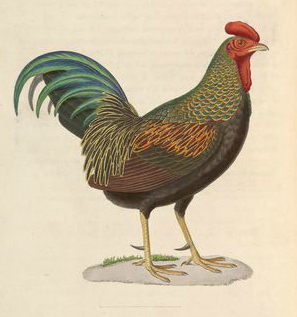
“The common jungle-cock (Gallus bankiva) was also obtained here. It is almost exactly like a common game-cock, but the voice is different, being much shorter and more abrupt; hence its native name is Bekeko.”
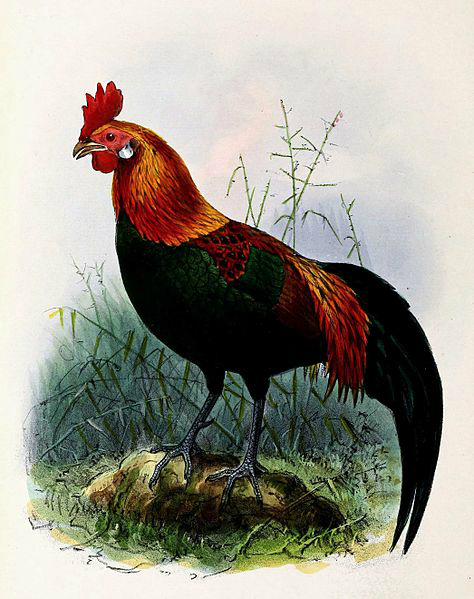
Six different kinds of woodpeckers and four kingfishers were found here, the fine hornbill, Buceros lunatus, more than four feet long, and the pretty little lorikeet, Loriculus pusillus, scarcely more than as many inches.
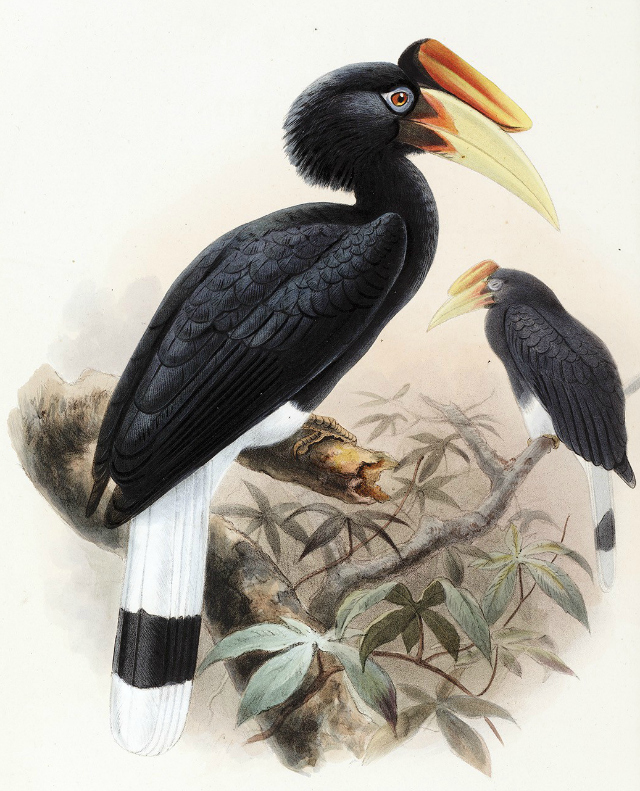
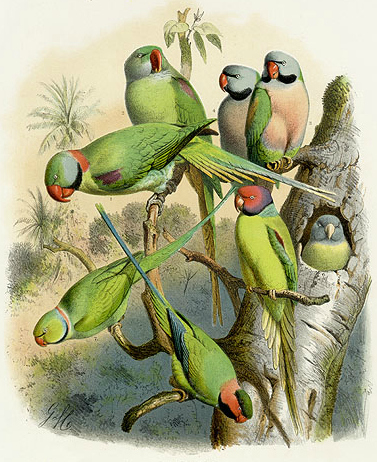
“In a month’s collecting at Wonosalem and Djapannan I accumulated ninety-eight species of birds, but a most miserable lot of insects. I then determined to leave East Java and try the more moist and luxuriant districts at the western extremity of the island. “
